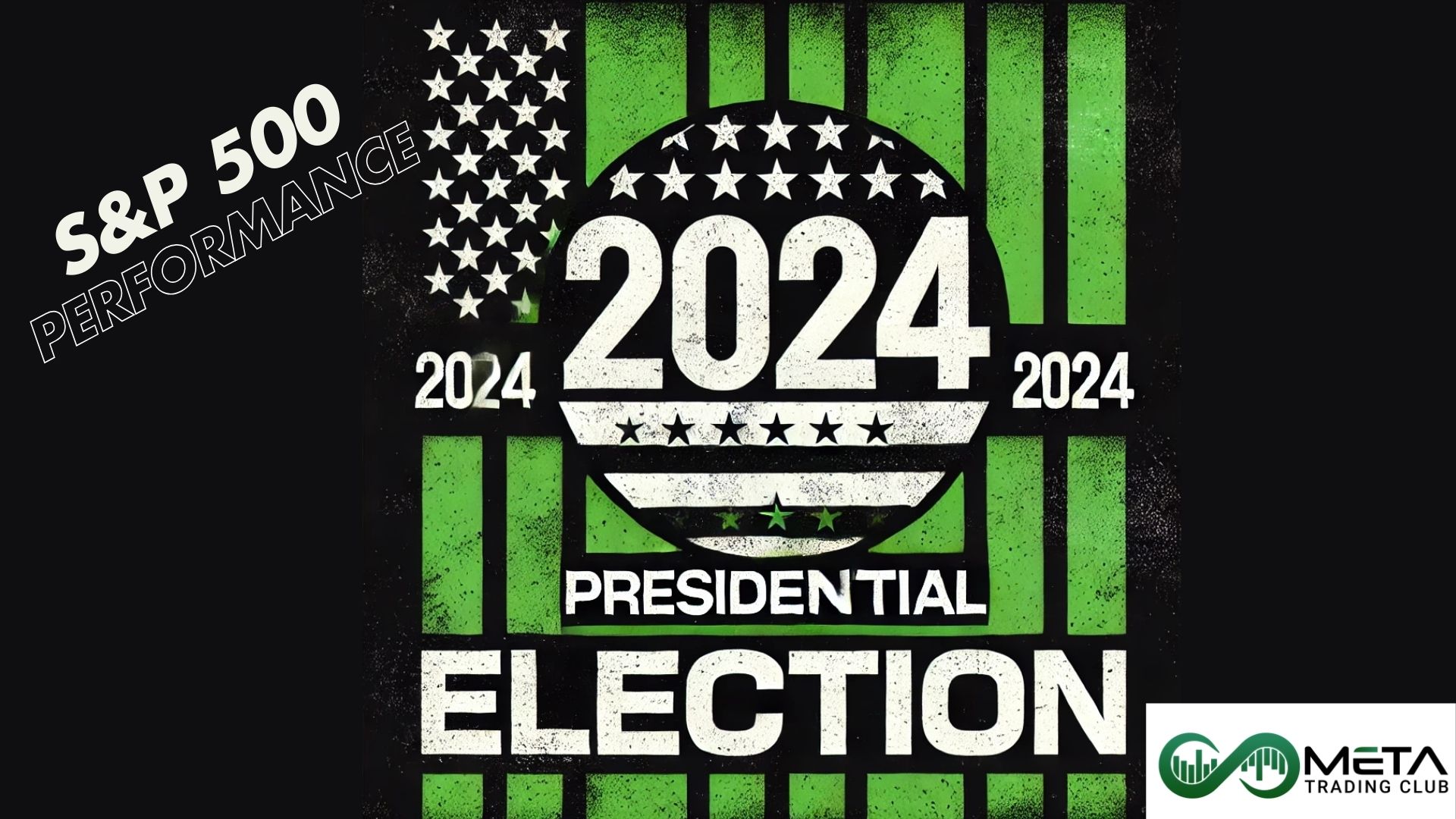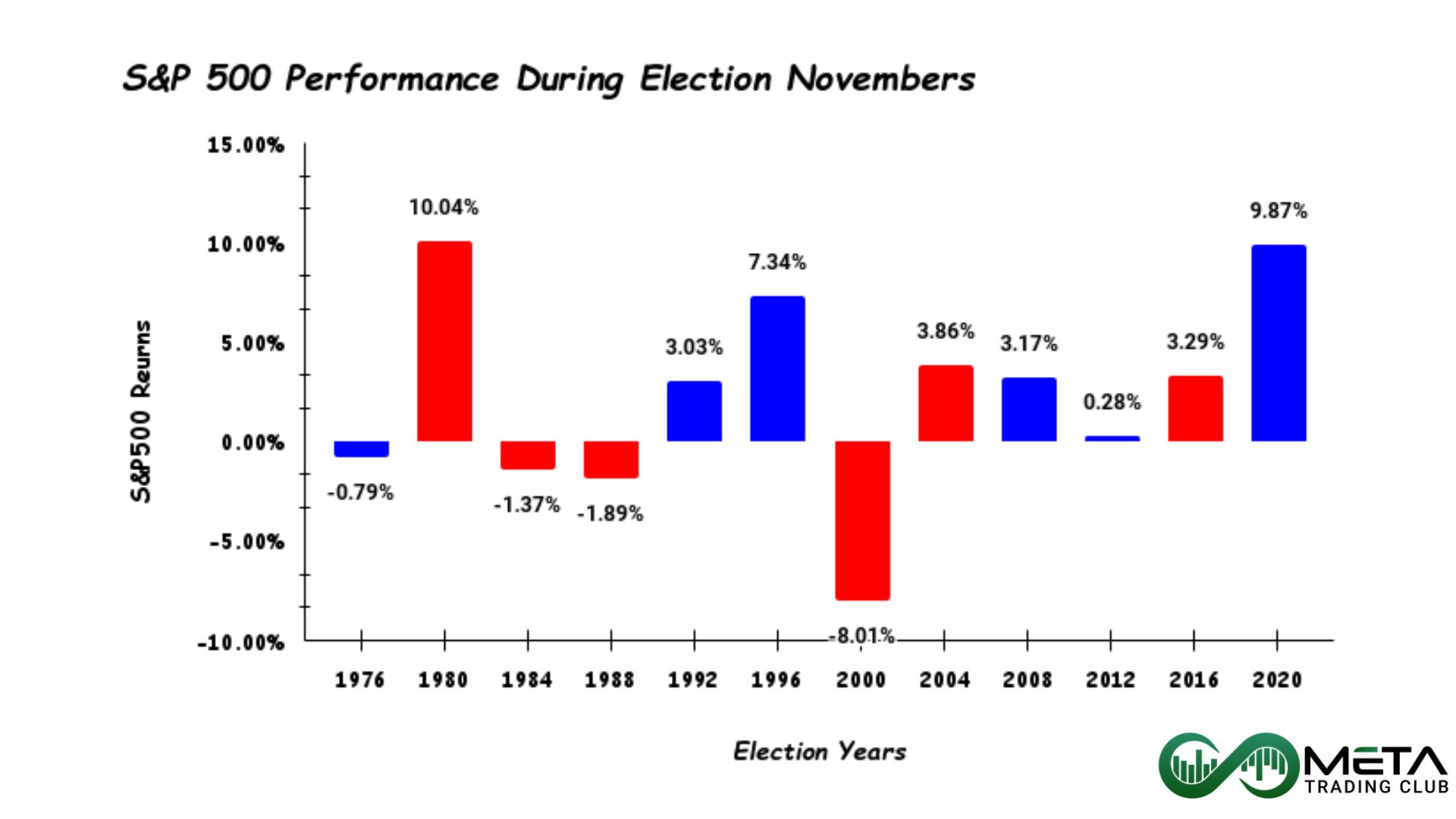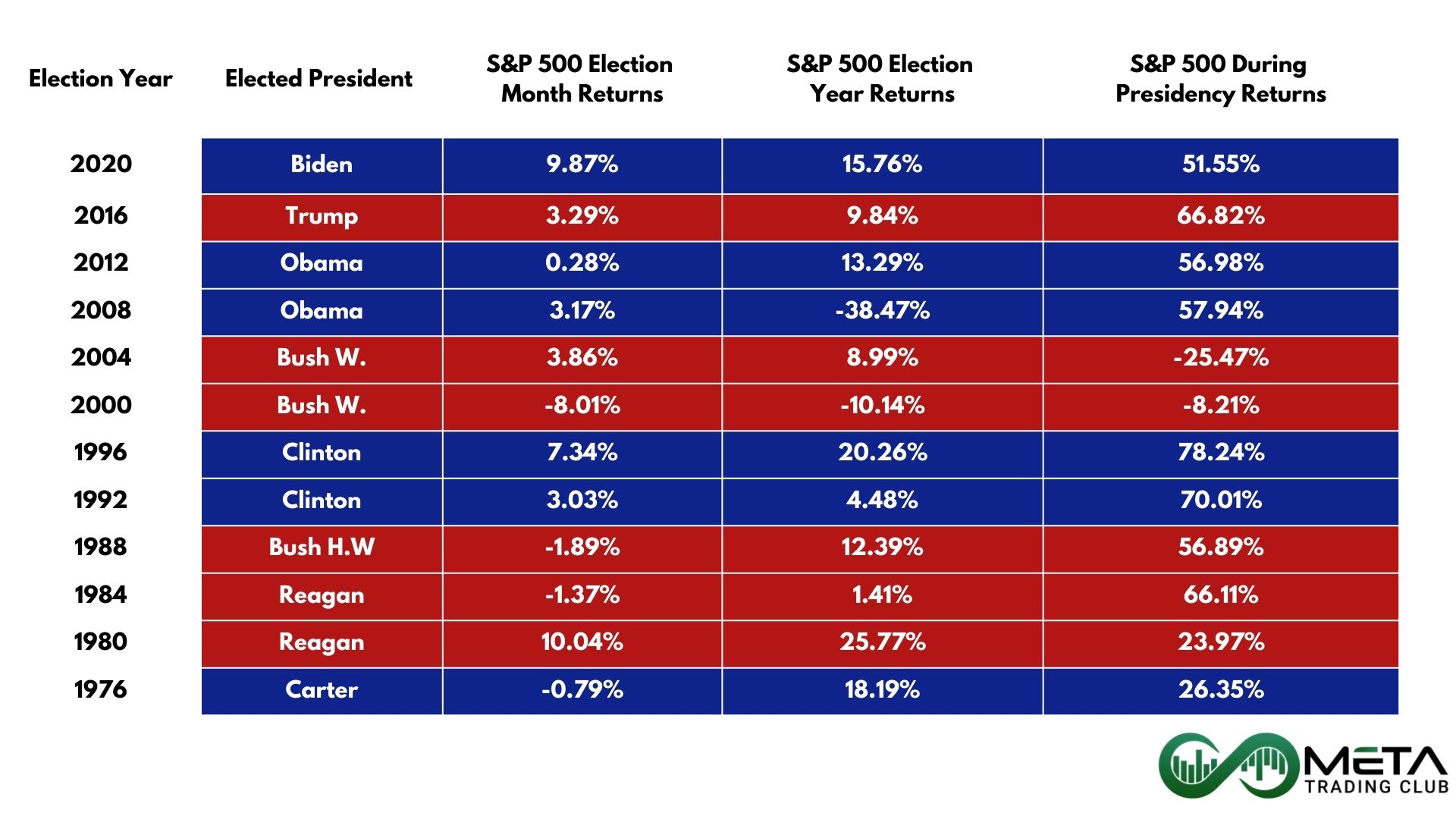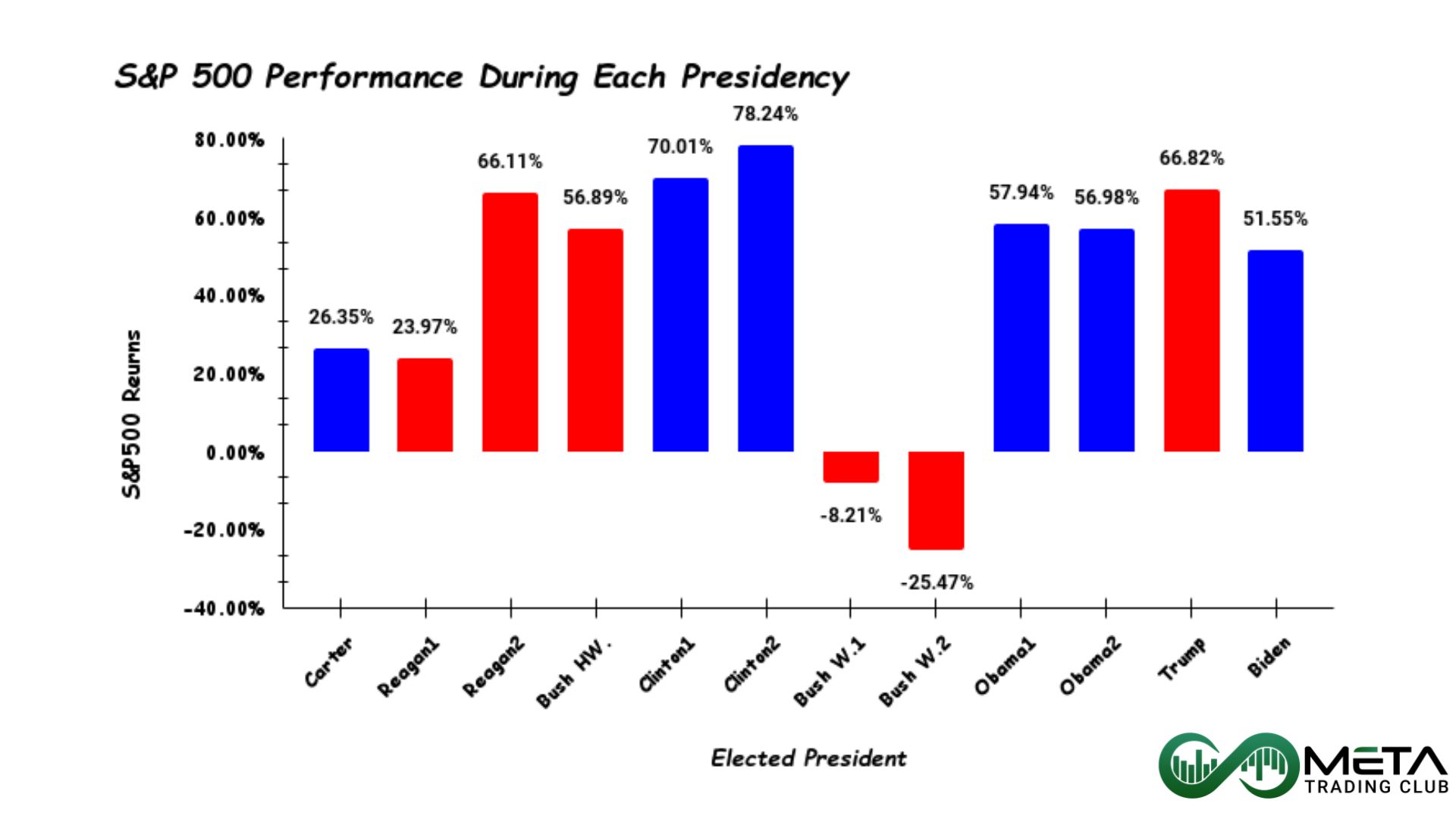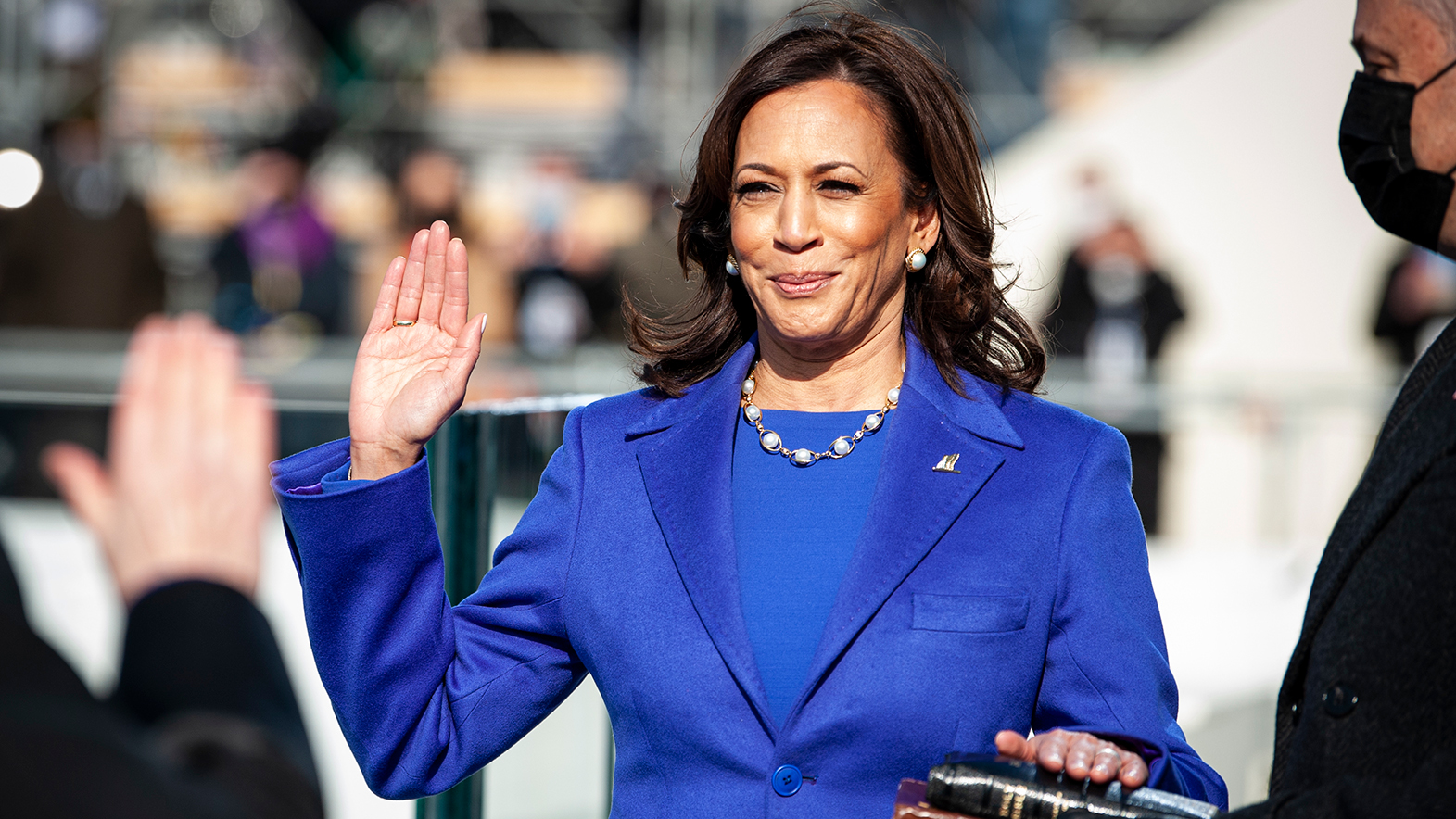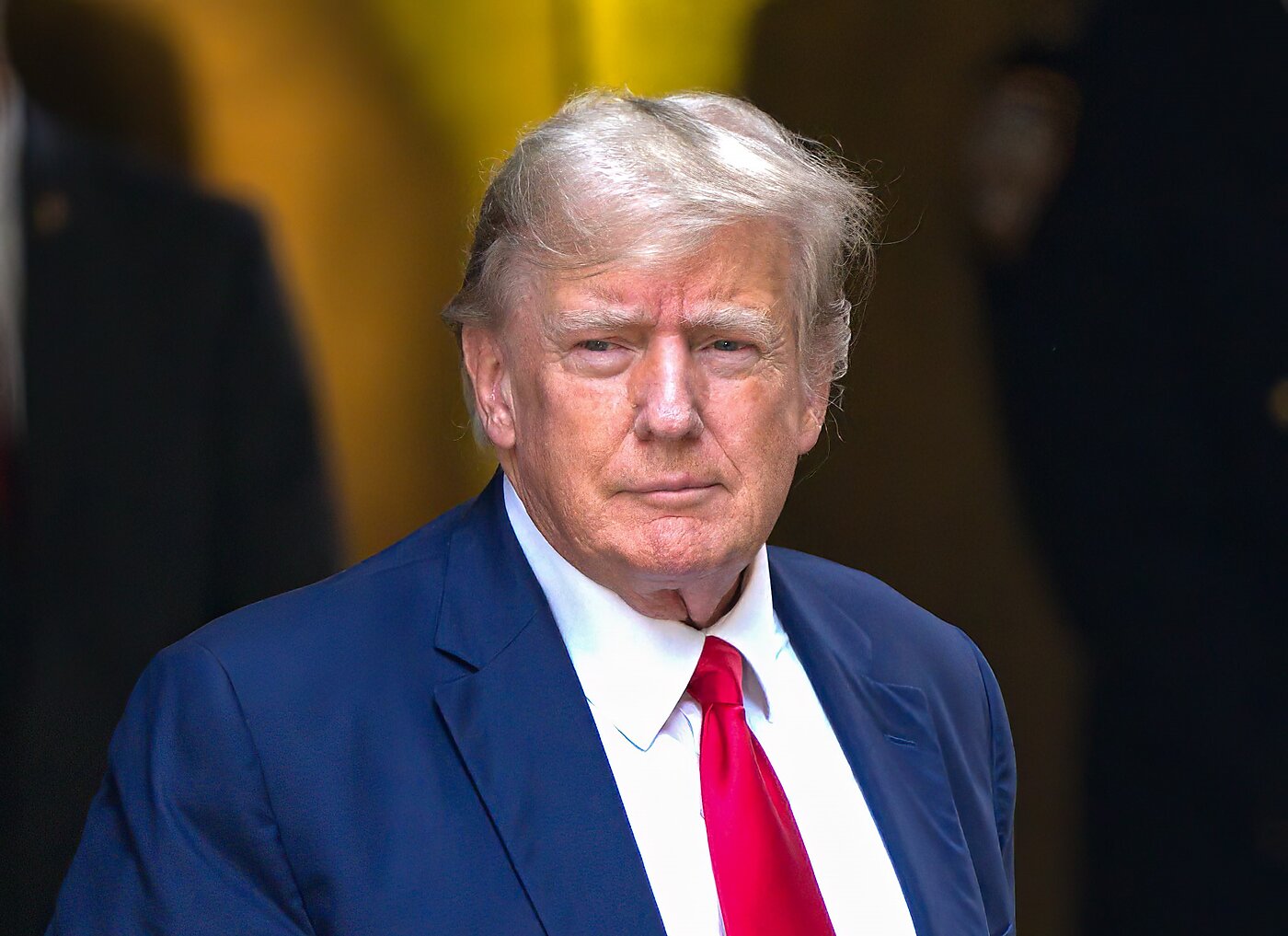The S&P 500 Index has consistently captivated investors with its varying returns during U.S. election Novembers. Spanning from 1976 to 2024, election month performances reflect both economic sentiment and market resilience across Democratic and Republican administrations. This analysis explores historical data, offering key trends and insights into how presidential election results have influenced stock market behavior.
Table of Contents
S&P 500 Performance During Election Novembers
The S&P 500 Index’s performance in November during U.S. election years often serves as a barometer for market sentiment. With an overarching trend of resilience and growth, the Index has shown volatility during some administrations while demonstrating robust returns in others. Examining the election month returns over the years reveals insightful patterns tied to economic policies, investor sentiment, and political stability.
Between 1976 and 2024, the S&P 500 has shown significant variation in election Novembers, with around 66% of election years (8 out of 12) posting positive returns. Notably, years like 1980, 1996, 2004, 2016, and 2020 saw gains, suggesting an optimistic economic outlook or investor confidence following these elections.
Notable Election month and Market Performance
The S&P 500’s response has varied depending on the party elected, with Democratic administrations historically posting a November average return of +3.82%, significantly higher than the +0.99% seen during Republican election months.
- Ronald Reagan (1980): The S&P 500 displayed optimism, reflecting expectations for Reagan’s economic reforms.
- Bill Clinton (1996): Positive returns aligned with economic expansion and tech growth.
- Joe Biden (2020): Stock market had welcome him with 9% surge S&P 500 in November.
S&P 500 Performance During Each Presidency
The S&P 500 performance during each U.S. presidency provides an interesting perspective on how the stock market has responded to different administrations. Here’s a summary of the performance under recent presidents:
This data shows that the stock market has generally performed well under both Democratic and Republican presidents, with some notable exceptions. For instance, the market saw significant gains under Bill Clinton and Donald Trump, while it experienced declines during Jimmy Carter’s and George W. Bush’s terms.
The highest performance was during Clinton’s second term (78.24%), while the lowest was during George W. Bush’s second term (-25.47%).
Despite the fluctuations, the overall trend suggests that the S&P 500 has shown resilience and growth across different administrations, reflecting the robustness of the U.S. stock market.
Democratic Administrations and S&P 500 Performance
Democratic presidents have often overseen strong S&P 500 performance. Clinton’s two terms saw gains of 70.01% and 78.24%, respectively, marking the highest returns recorded in this study. Obama’s terms also demonstrated solid market growth with 57.94% and 56.98%, highlighting the economic recovery following the 2008 financial crisis.
Republican Administrations and S&P 500 Performance
The S&P 500 performance under Republican presidents has shown both highs and lows:
- Reagan: Marked by returns of 23.97% in his first term and 66.11% in his second.
- George W. Bush: Experienced a decline of -8.21% and -25.47% across his two terms due to economic downturns.
- Trump: Achieved strong performance with a return of 66.82%, with policies favoring corporate tax cuts.
U.S. 2024 Election
The 2024 U.S. presidential election is set to be a pivotal event, with Vice President Kamala Harris representing the Democratic Party and former President Donald Trump running for the Republicans. This election is not just about choosing the next president; it also includes elections for all 435 seats in the House of Representatives and 34 Senate seats.
Kamala Harris
San Francisco District Attorney: Elected in 2003, served two terms until 2011.
California Attorney General: Served from 2011 to 2017, becoming the first woman, African American, and Asian American to hold the office.
U.S. Senator: Represented California in the Senate from 2017 to 2021.
Vice President: Elected as the 49th Vice President of the United States in 2021, serving under President Joe Biden.
Harris’s Attitude and Potential Economic Impact
Tech-Friendly Stance: Harris’s understanding of the tech industry could benefit tech giants like Apple and Google, fostering a favorable environment for tech stocks.
Middle-Class Advocacy: Focus on housing affordability, healthcare costs, and banning price gouging could boost homeownership and improve living standards.
Regulatory Changes: Proposals to revise tax cuts and block algorithm-driven rent pricing could impact corporate earnings and investor sentiment.
Housing Market Pressure: Increased demand from housing initiatives might outpace supply, potentially driving up prices.
Donald Trump
Trump Organization: Became president of the company in 1971, renaming it the Trump Organization and focusing on building and renovating skyscrapers, hotels, casinos, and golf courses.
Presidency: Elected as the 45th President of the United States in 2016, serving from January 20, 2017, to January 20, 2021.
Policies: Known for populist, protectionist, and nationalist policies, including a travel ban on citizens from several Muslim-majority countries and diverting military funding to build a wall on the U.S.-Mexico border.
Impeachments: Impeached twice by the House of Representatives, first in December 2019 and again in January 2021.
Trump’s Attitude and Potential Economic Impact
Tax Cuts: Trump plans to reduce corporate tax rates, which could boost corporate profits and investor confidence. Although stimulating economic growth, increased federal debt and trade conflicts could pose long-term risks.
Tariffs: Imposing tariffs on imports, especially from China, to protect American jobs and industries. Tariffs could lead to a contraction in stock prices, especially for companies reliant on international supply chains.
Deregulation: Rolling back regulations, particularly in the environmental sector, to promote business activity.
Deportation of Undocumented Workers: Reducing the number of undocumented workers, which could impact industries reliant on this labor force.
Federal Reserve Influence: Trump has expressed interest in influencing the Federal Reserve’s interest rate policies.
Economic Volatility: Trump’s unpredictable policies led to market fluctuations and investor uncertainty.

